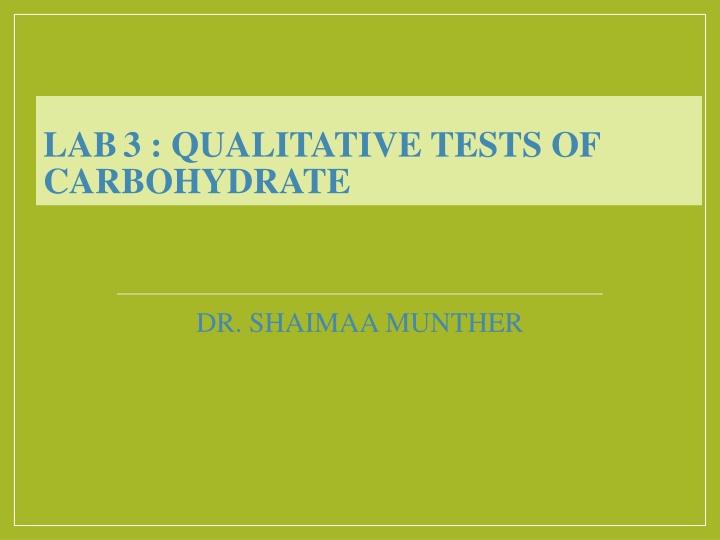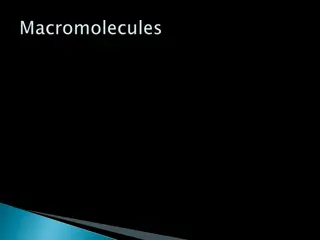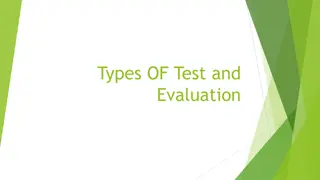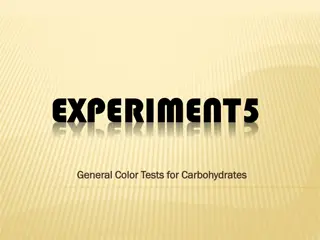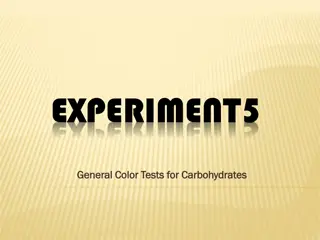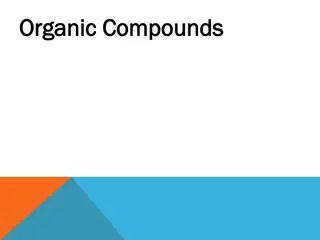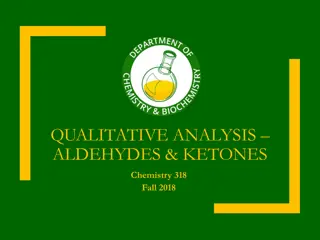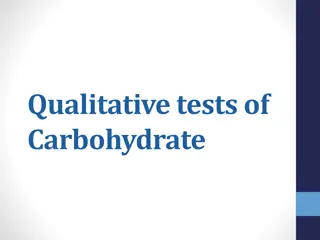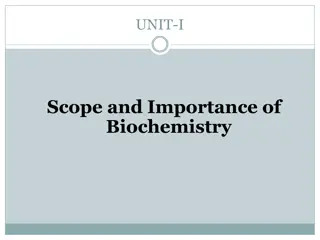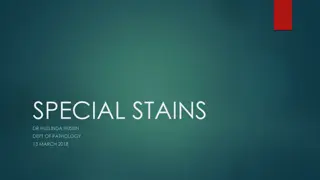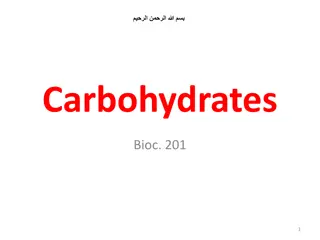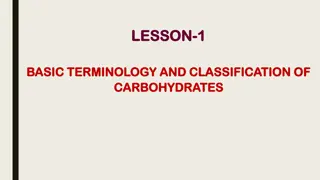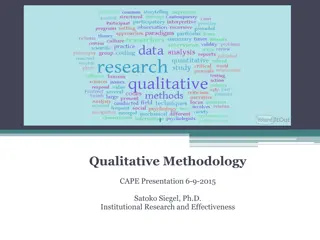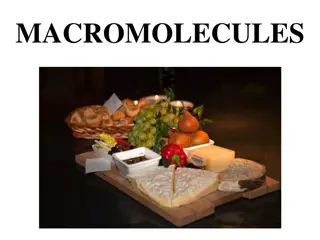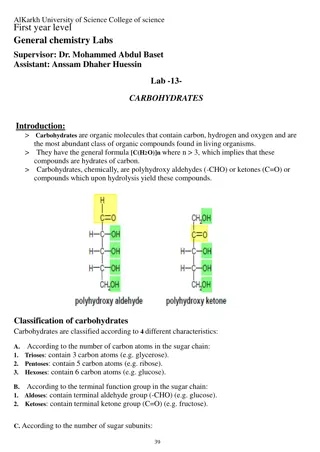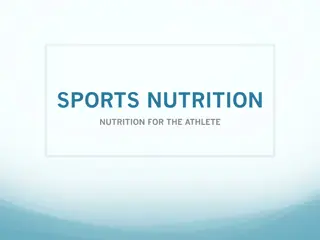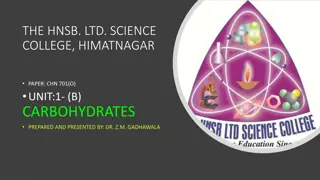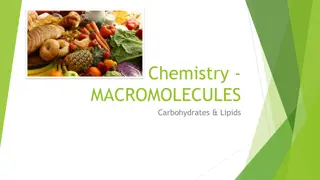Qualitative Tests of Carbohydrates in Biochemistry Lab
The lab features qualitative tests for identifying different types of carbohydrates such as pentose and hexose monosaccharides. Tests include Bial's test to distinguish between sugar types, Seliwanoff's test for aldoses and ketoses differentiation, and Iodine test for polysaccharide detection. Each test has specific procedures and principles outlined to aid in carbohydrate identification.
Download Presentation

Please find below an Image/Link to download the presentation.
The content on the website is provided AS IS for your information and personal use only. It may not be sold, licensed, or shared on other websites without obtaining consent from the author.If you encounter any issues during the download, it is possible that the publisher has removed the file from their server.
You are allowed to download the files provided on this website for personal or commercial use, subject to the condition that they are used lawfully. All files are the property of their respective owners.
The content on the website is provided AS IS for your information and personal use only. It may not be sold, licensed, or shared on other websites without obtaining consent from the author.
E N D
Presentation Transcript
LAB3 : QUALITATIVE TESTS OF CARBOHYDRATE DR. SHAIMAA MUNTHER
4. Bials Test Objective: To distinguish between pentose monosaccharide and hexose monosaccharide Principle: Bial s test uses concentrated HCl as a dehydrating acid and orcinol + traces of ferric chloride as condensation reagent. The test reagent dehydrates pentoses to form furfural. Furfural further reacts with orcinol and the iron ion present in the test reagent to produce a bluish or green product, while hexoses yield muddy-brown to grey condensation product.
PROCEDURE: Put 1 ml of a sample solution in a test tube. Add 2.5 ml of Bial's reagent (a solution of orcinol, HCl and ferric chloride) to each tube. Heat the tubes gently in hot water bath for 5 min. A bluish or green product color indicate the presence of pentose sugar.e.g ribose Tube observation 1-glucose 2-ribose 3-fructose
5. Seliwanoff's Test This test is used to distinguish between aldoses (like glucose) and ketoses (like fructose). Objective: To distinguish between aldose and ketone sucrose. Principle: A dehydration reaction due to the hydroxyl groups of the sugar. Selivanoff s reagent is resorcinol in dilute hydrochloric acid. Ketoses (e.g. fructose) are more readily dehydrated by HCl than the aldoses to form hydroxymethyl furfural which then condenses with resorcinol of Seliwanoff s reagent to form a red colored complex.
PROCEDURE: Three ml of Seliwanoff's reagent (a solution of resorcinol and HCl) is placed in a test tube. 5 drops of a sample solution is added . The solution is then heated in a boiling water bath for two minutes. The +ve result is indicated by the presence of orange to red colored solution. Tube observation 1-glucose 2-fructose
6. Iodine Test It is a specific test for polysaccharide detection. Procedure: To 2-3 ml of starch solution add 2 drops of dilute (0.05 N ) iodine solution. Observe the changes on heating and on subsequent cooling. Observation: Deep blue color appears which then disappears on heating and then reappears on cooling . Principle: Starch forms a adsorption complex with iodine to give a blue color. The blue color disappears on heating due to the breaking of the Iodine starch adsorption complex and appears on cooling due to reformation of the adsorption complex.
Test objective Molisch test To identify the carbohydrate from other macromolecules lipids and proteins Benedict's test Benedict's reagent is used as a test for the presence of reducing sugars. Barfoed s Test To distinguish reducing monosaccharides Bial s Test To distinguish between pentose monosaccharide and hexose monosaccharide Seliwanoff's Test To distinguish between aldose and ketone sugars Iodine test To distinguish polysaccharides
